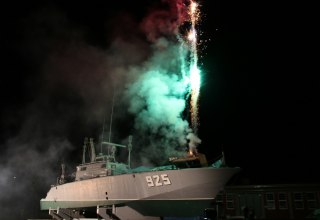In historical ensembles of buildings you can learn more about the impressive history of Rechlin's development into the former central and largest test site for land-based aircraft up to 1945 and the reuse by Soviet-Russian aviation until 1993. The NVA's information centre and the former shipyard are also presented - as well as the lives of the people who worked and lived here.
The museum shows the aviation history of Rechlin from the beginning of aviation from 1918 onwards. The focus lies on the history of aviation technology and testing by the former air force until 1945. Other exhibitions show the post-war history of the site, its use by the NPA until 1990 and the Red Army until 1993, as well as the history of the Rechlin shipyard and the town to the present day. Guided tours are possible by appointment.
While in 1916 Rechlin only consisted of a church, a manor house and smaller farmsteads, the Grand Duke of Mecklenburg-Schwerin started a noticeable building activity with the opening of the former Pilot's Institute on 29 August 1918. Around 1940, around 4000 engineers, employees and test pilots were already working in Rechlin on the test site and lived with their families in newly created housing estates. At three airfields and countless hangars and laboratories in Rechlin, groundbreaking developments in aviation history were brought to production maturity, which still set standards today.
Experience this 20 years of history as if in flight - from the curtain-clad biplane to the fastest jet aircraft at that time.
After 1945, Soviet air forces occupied Rechlin and used large parts of the area for their purposes. Rechlin experienced a division like Berlin - a wall in the middle of the village separated 2500 German residents from about 4000 pilots and soldiers with their families for 48 years until the pull-out in 1993. Remains of the wall and an information board in the village are silent witnesses of the past. Our museum also provides information on how life on both sides of the wall was going on back then.
Thanks to the highly qualified engineers who lived and worked here until 1945, a shipyard was founded on the south bank of the Müritz in 1948. Lifeboats initially made of aluminium, later made of plastic, left the shipyard in large numbers. In addition to military ship types, about 1500 employees of the shipyard produced many other accessories for shipbuilding. Evidence of this is provided by a 19m long speedboat, which at that time and still today was regarded as the fastest boat of its kind on the Baltic Sea. 3600hp accelerated the up to 32t "Libelle Torpedo Boat (KTS-Libelle)" up to 100km/h. The ship rises imposingly on the inner courtyard of the museum. In our showrooms you can see details of the shipyard's inventions.
























